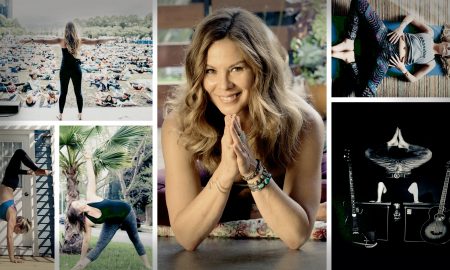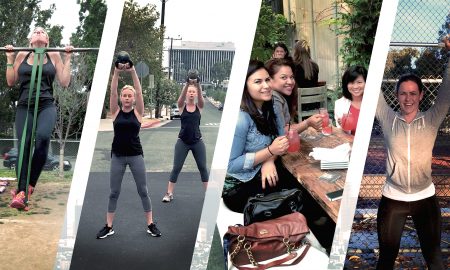

Today we’d like to introduce you to Dario Alvarez.
Hi Dario, thanks for joining us today. We’d love for you to start by introducing yourself.
My journey is rooted in the landscapes of Southern California and northern Baja California—regions where the chaparral forests meet the sea, and the desert night sky offers homage to the ancestors. These terrains profoundly influenced my perspective as an architect, planner, and researcher, teaching me that cities are not merely technical constructs but rather spiritual, social, and economic ecosystems.
After formal studies at UC Berkeley and the University of Maryland, I engaged in diverse sectors—from high-end architectural design to state-level environmental planning. While these experiences honed my technical skills, I yearned for a practice that seamlessly blended empirical data with visionary design—a practice that could navigate the realms of policy and poetry.
This aspiration led to the founding of Pacific Urbanism, an independent research, architecture, and urbanism studio dedicated to reshaping the built environment through equity, beauty, and deep community engagement. Our work is characterized by rigorous spatial analysis and a commitment to materials that honor their origins, reflecting a deep respect for the natural and cultural contexts in which we operate.
To further this mission, we established the Center for Pacific Urbanism, a nonprofit organization that delves into the root causes of urban inequity, devises strategies for remediation, and develops tools to empower communities in shaping their urban landscapes. Guided by principles of social equity, environmental justice, and community economic development, our initiatives range from spatial modeling and policy evaluation to data visualization and public education.
Among our significant contributions is the Housing Allocation Index, a novel method proposing a more equitable distribution of Los Angeles’s housing targets across its 35 community plan areas. This work underscores our commitment to data-driven solutions that address systemic disparities in housing.
In response to the urgent need for interim housing solutions, we conducted a comprehensive analysis identifying over 200 viable sites for temporary housing. This research informed Mayor Karen Bass’s Executive Directive 1 (ED 1), which aims to expedite the development of affordable housing projects in Los Angeles. Our findings provided specific sites that the City used to develop housing that is critical in addressing homelessness.
Separately, our expertise contributed to the legal proceedings in the LA Alliance for Human Rights v. City of Los Angeles and County of Los Angeles case overseen by Judge David O. Carter. We provided spatial analyses identifying suitable government-owned land for emergency shelters, supporting the court’s mandate for the city to offer shelter to its homeless population.
Our work has been recognized with the APA Los Angeles 2021 Award of Merit and has been featured in prominent publications such as The Wall Street Journal, The Atlantic, NPR, and the Los Angeles Times, contributing to the broader discourse on housing and urban development.
At Pacific Urbanism, we embrace an aesthetic that values textural, earthen materials—limewashed walls, reclaimed wood, and natural tones—not as mere design choices but as expressions of devotion to place and history. The occasional drift of palo santo or copal in our studio serves as a sensory reminder of our connection to the land and its stories.
We see ourselves as interpreters—translators between the measurable and the intangible, the empirical and the experiential. Our belief is that the most impactful urban plans are those that resonate with the earth, reflect the sky, and honor the narratives of those who came before.
My sons continually remind me of the legacy we are crafting—not just for our generation but for those to come. They inspire a commitment to building cities that are not only functional but also imbued with meaning, ensuring that what we construct today becomes a cherished story for the future.
We all face challenges, but looking back would you describe it as a relatively smooth road?
No — but it’s been the kind of road that reveals itself with each step. The kind shaped by wind, time, and intention rather than straight lines. Coming from a background shaped by borderlands — where traditions, languages, and systems intertwine — I’ve often found myself translating between worlds: the quantitative and the spiritual, the bureaucratic and the ancestral.
Starting Pacific Urbanism meant challenging conventional ways of working — not with noise, but with depth. Some institutions weren’t ready for a firm that speaks data and poetry in the same breath. At times, navigating city politics, inertia, or even securing a seat at the table felt like walking uphill through sand.
But each challenge gave us clarity. Each resistance taught us form. And the road, while never smooth, has always been meaningful — built not just with tools, but with care.
We’ve been impressed with Pacific Urbanism, but for folks who might not be as familiar, what can you share with them about what you do and what sets you apart from others?
Pacific Urbanism is an urban, architectural, and research design studio grounded in the belief that cities are living ecologies — layered, emotional, and political. We operate across disciplines, weaving together design, planning, and policy analysis to create places and strategies that are as responsive as they are visionary.
We’re known for our ability to bridge the analytical with the intuitive. We support community driven development of housing and land use strategies backed by deep spatial modeling, but we also listen for the story each site is trying to tell. Our work is rigorous — we map, evaluate, simulate, and forecast — but it’s also sensorial. We design with texture, light, memory, and meaning.
Through our nonprofit arm, the Center for Pacific Urbanism, we tackle systemic issues with tools designed for real-world application: housing allocation models, site suitability analyses, policy diagnostics, and public engagement strategies. Whether we’re advising on regional housing equity or identifying emergency shelter locations, our work is made for both decision-makers and communities.
What sets us apart isn’t just what we do — it’s how we do it. Our brand carries an aesthetic and ethos shaped by the desert, the coast, and the cultural crossings between them. We’re drawn to natural materials that tell time through their patina. We’re fluent in both formal datasets and informal knowledge. And we never separate the spiritual from the structural.
What I’m most proud of is that we’ve created a practice that feels both ancient and emergent. One that values humility, ceremony, and clarity — and that invites people in, whether they’re civic leaders or local youth.
For those unfamiliar with our work, I’d say this: We don’t offer prepackaged solutions. We create custom tools and frameworks that help people understand, shape, and reclaim the environments they inhabit. We design not just for impact, but for inheritance.
What were you like growing up?
I was the kind of kid who could spend an entire afternoon tracing a crack in the sidewalk or collecting the bones of bird wings in the arroyo behind the house. Quiet, but not shy. Curious, but inward. I didn’t speak to fill space; I spoke when I had something to say — usually about how something worked, or how it felt. I asked a lot of questions about place, about why certain buildings felt alive while others felt vacant, about how people made decisions that shaped so much of what we see and live with every day.
I was drawn to maps, to materials, to the act of making. I’d rearrange my room like it was a miniature city. There was an early fascination with both systems and rituals — which I think is still true of me today. I’ve always moved between logic and symbolism, between structural order and sacred rhythm.
I was raised between languages and borders, which meant early on I learned how to shift, to observe, to navigate. It gave me a kind of double vision — the ability to see what’s present and also what’s missing. What’s said and what’s implied. I think that’s shaped the way I move through the world now — as someone who’s always designing in dialogue: with history, with land, with people.
There was also a spiritual streak, even if I didn’t have words for it then. I felt the world deeply. I was comforted by silence, by stars, by patterns in nature that made me feel part of something older and wiser. I carried that into adulthood, where it still fuels the way I approach cities — not just as systems to optimize, but as vessels of meaning.
Contact Info:
- Website: https://www.pacificurbanism.com
- Instagram: pacificurbanism
- Other: https://www.pacificurbanism.org

















